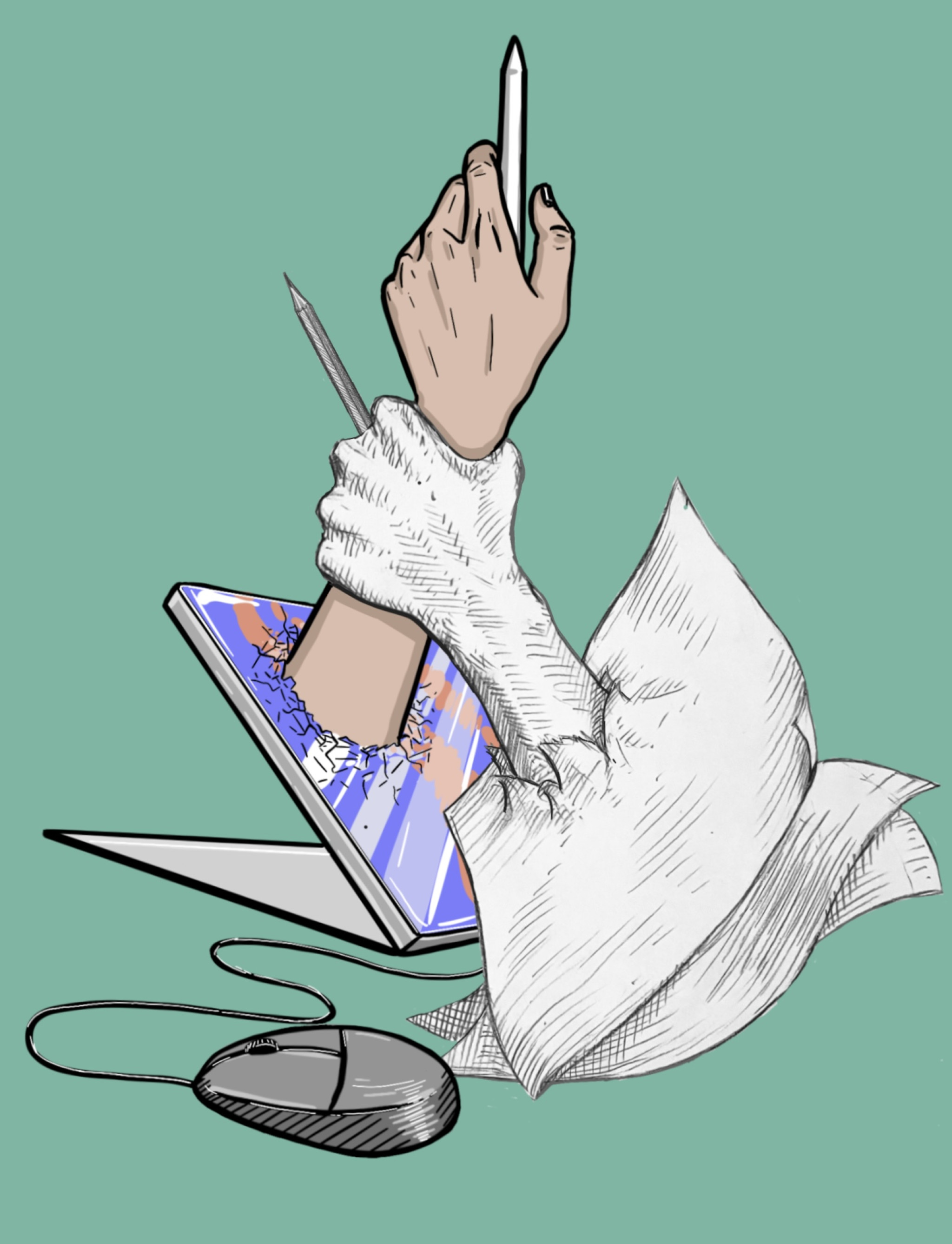You can chuck paint at a canvas, but how does one throw paint at an iPad? Digital versus traditional art is a topic hotly debated amongst the art world. Museums such as the Whitney Museum of American Art have digital art lining their walls, while other institutions like the Louvre Museum are world-renowned for their traditional paintings. One of the few recognizable names in digital art is David Hockney, who is known for his use of vibrant colors and employing various forms of technology in his work. In an interview with Anders Kold, the curator of the Louisiana Museum of Modern Art, Hockney said, “The iPad made me draw a lot more.” Artists like Maurice Benayoun, a French new-media artist, take digital creativity to the next level. Benayoun creates animations that are not possible traditionally, as he combines different media; including immersive virtual reality, computer graphics, and 3D printing. Digital art, as it is a broad concept, usually refers to any type of art where technology was involved in the end result. On the other hand, traditional art involves little to no technological input. So how do artists find their medium, or in some cases, their mediums?
Berkeley High School junior, Mags Metcalf-Tobin, has his own style of traditional art that he describes as unique. He considers traditional art more accessible.
“I would say traditional art is easier to start,” Metcalf-Tobin said, “I just feel like it’s more real.” While many people want to learn how to make digital art, Metcalf-Tobin believes traditionally art is currently more widespread.
BHS junior Moss Vorobyeva takes International Baccalaureate Studio Art and has been pursuing art for a lot of his life. Vorobyeva has tried both forms of art, digital and traditional, and can easily pinpoint the benefits of digital art.
“It’s much more forgiving. With the layers and (the ability of) undoing, there’s a lot less planning required. You can have no idea what you’re doing, and then it’s like, ‘Okay, lets try these colors. Let’s try these colors,’ because you can play around a lot,” Vorobyeva said. Vorobyeva also noted how interconnected different styles of the art world can be.
“I believe everyone, even digital artists, should have a paper sketchbook. It’s harder to learn if you keep deleting and erasing or not committing to things. And with digital art it’s much easier to doubt yourself and delete it all,” Vorobyeva said.
There is a sense of admiration on both sides of the spectrum. BHS junior Elizabeth Sullivan spoke about how both traditional and digital art are beautiful mediums.
“I admire digital art, but I don’t do it,” Sullivan said. She is a traditional artist who brings art to many in the club she helped start called, Canvas Club. “When my friends and I started the Canvas Club, an art club intended to distribute traditional art supplies to BHS students, we found a method to connect with others in a meaningful way. Through art,” Sullivan said. For Sullivan, it is very important for arists to be able to connect with a like minded community.
When comparing digital and traditional art, many do so with a rival mentality, weighing the pros and cons of each and trying to determine a winner. Many artists, however, start off with paint on a canvas and then use that traditional concept to move towards a digital piece. Digital and traditional art are interwoven ideas; you can’t truly put any art into one box.
While some may see digital art as just drawing on a computer screen, there is more to be done digitally than that. The same is to be said with traditional art. Performance art that projects images and videos or a live painting where visitors can watch their process are examples of traditional art with a unique twist. Nowadays, artists can break the boundaries of visual art and subvert the norm, which will lead to more beautiful, innovative works in the years to come.





